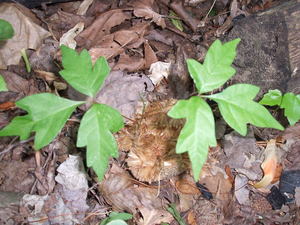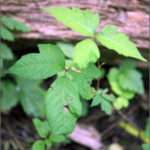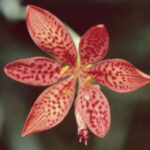When I purchased my property years ago, it was a vacant, neglected space that was overgrown with a variety of invasive trees and plants, including poison ivy, A little cautious hard work rid the property of the poison menace without wreaking havoc to my skin. Poison ivy thrives in shady, overgrown landscape locations, and as the name suggests, it is a poisonous plant that can cause serious skin rash, eye irritation and respiratory problems. Poison ivy is a hardy plant that takes some time, effort and precautions to kill, but it can be done with these tips.
A Year in Advance
If a landscape or garden plan includes using an area of the yard that has poison ivy growing in it, start killing the poison ivy one year prior to beginning the new landscaping or garden project. Poison ivy has deep, hard-to-kill, running vine-like roots that takes two seasons to completely eradicate.
Apparel
Take precaution when working in or near poison ivy. Cover all exposed areas of the body. Long sleeves, long pants and gloves are a must. Rubber boots, a face covering and goggles are wise to wear when dealing with a large patch of poison ivy. Remember, it’s the plant’s oils that are poisonous and when attempting to pull up the tough fibrous plant, the poisonous oils can connect with the face or shoot into the eyes (an experience no one covets).
Thoroughly wash all appeal and boots worn after being in or near poison ivy. The plant’s oils may be on apparel items and can cause an allergic reaction later when the apparel article is touched. Wash hands thoroughly with soap and water to remove the poisonous oils that may be on the skin.
Herbicide and Plastic
Saturate the visible poison ivy plants with a total vegetation killer. Several applications of the herbicide will be needed throughout the year to totally kill the plants.
To expedite the killing process and to make certain that all underground roots and shoots are killed, cover the area with clear plastic sheeting during the summer to “cook” the pre-emerging poison ivy plants.
Safe for Planting
After the year of herbicide and plastic treatments, the area is safe for planting the flowers or vegetables of choice.
Some lingering poison ivy roots may remain in the ground and need to be pulled up and out by hand or with a garden rake. Keep a watchful eye on the area, and remove any rogue plants as soon as they emerge.
Never Burn Poison Ivy
Poison ivy plants should never be burned, even plants that look dead. The poisonous oils of the plant is carried in the smoke and can be inhaled, causing serious respiratory problems. Removed poison ivy plants need to be double bagged in plastic and discarded of properly.
Land can be reclaimed from the grips of poison ivy and utilized for landscaping or gardening. Start a year in advance to cleanse the soil with herbicide and plastic sheeting. Wear protective apparel when working around poison ivy and discard the removed poison ivy plants properly.
Sources:
MedlinePlus
WebMD
gardeningknowhow








